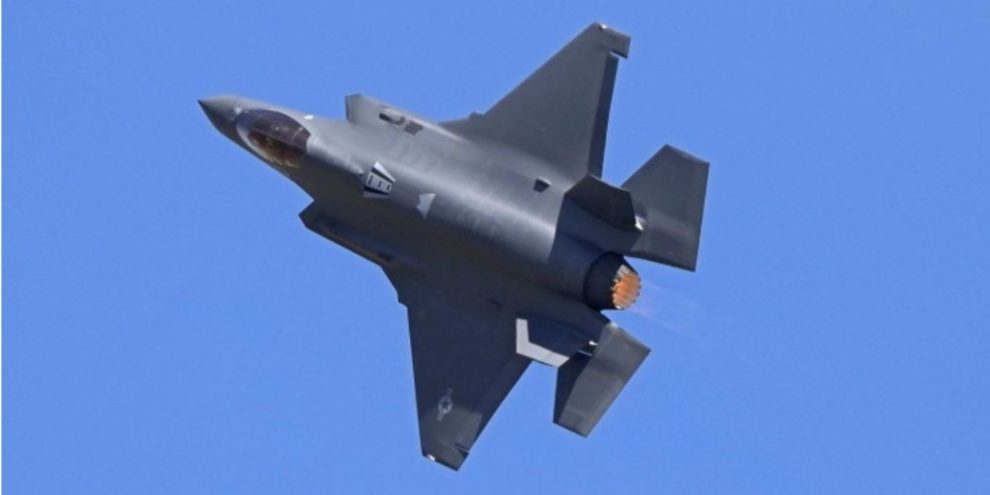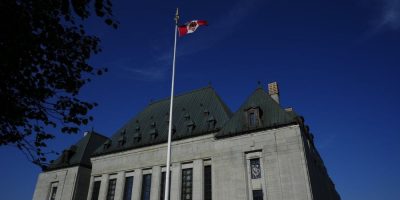
The estimated cost of Canada’s incoming fleet of advanced stealth fighters exploded by nearly 50 per cent in just a few years, auditor general Karen Hogan said Tuesday in a new report.
The fighter jet audit was one of eight tabled in the House of Commons by Hogan and environment commissioner Jerry DeMarco. The reports flag problematic procurement contracts, a backlog in applications for First Nations status and a delay in reducing the amount of federal office space.
An investigation by the auditor general concluded that costs associated with the F-35 advanced fighter jet program are running $8.7 billion higher than the original estimates.
And it warns the program is being plagued by delays and critical shortfalls — including a lack of qualified pilots.
Barrie's News Delivered To Your Inbox
By submitting this form, you are consenting to receive marketing emails from: Central Ontario Broadcasting, 431 Huronia Rd, Barrie, Ontario, CA, https://www.cobroadcasting.com. You can revoke your consent to receive emails at any time by using the SafeUnsubscribe® link, found at the bottom of every email. Emails are serviced by Constant Contact
The report lands in the middle of an active review ordered by Prime Minister Mark Carney to examine possible alternatives to the F-35. He ordered the review in response to U.S. President Donald Trump’s trade war with Canada.
National Defence said in 2022 the base price for the F-35s would be $19 billion. Just two years later, the number has climbed to $27.7 billion. That estimate does not include figures for infrastructure upgrades or weapons.
The report says the department’s 2022 estimates relied on outdated data from 2019 — despite the availability of better estimates showing “that costs of the aircraft had already increased substantially.”
The audit says issues associated with the global pandemic — such as runaway inflation, rising costs for facilities and munitions and volatile foreign exchange rates — pushed the price tag sky high.
Defence Minister David McGuinty's office sent out a written statement to media that blamed the increased costs on "external economic conditions driven by the COVID-19 pandemic, including global supply chain disruptions, workforce shortages, and increased inflation and foreign exchange rates."
"In combination with increased global tensions and related impacts on the availability and demand for materials, we would not have been able to deliver the full scope of this project under our previous budget," he said in the statement.
But Hogan also warned Tuesday that the program faces “significant risks that could jeopardize the timely introduction of the new fleet.”
She said the department successfully identified the risks but has not planned appropriately to mitigate them.
Construction of two new fighter squadron facilities — in Cold Lake, Alta., and Bagotville, Que. — is running three years behind schedule. The report says the facilities will not be ready until at least 2031 because the department needs to “redo important elements” of their design.
The department started planning the new facilities in 2020 before the government had settled on the F-35. The aircraft comes with significant infrastructure security requirements.
“Costs to develop an interim solution to support the new jets will further increase infrastructure expenses,” the report warned.
It said the department produced a contingency plan to operate the aircraft from temporary facilities but the plan fell short because it was incomplete and offered “no proposed actions nor a cost estimate.”
Canada is also still short of qualified pilots to fly the advanced aircraft — despite being warned about this in 2018.
The report said the F-35 program lacks measures to minimize potential risks and the department failed to produce robust contingency plans. It notes that the department identified cost overruns from inflation and currency fluctuations as potential risks to monitor, but plans to track those risks were never approved by officials.
The Liberal government announced in 2017 it planned to purchase 88 new fighter jets. It signed a contract with Lockheed Martin for the F-35s in 2023.
The modern jets are needed to replace Canada’s aging CF-18 fleet, which is nearing the end of its service life.
The fighter jets are expected to be delivered between 2026 and 2032. Over the next two years, the initial eight will be sent to a U.S. air force base in Arizona, where Canadian pilots will be trained to fly them. The rest will be delivered to Canada starting in 2028.
The report said the Joint Strike Fighter Program Office conducted various assessments that uncovered “significant issues,” such as “insufficient departmental engineering personnel to service support equipment for both the CF-18 Hornet and CF-35A during the transition.”
The audit said that at the end of the last fiscal year in March, National Defence earmarked $935 million for the U.S. government for the first four jets and related items needed to produce another eight aircraft. It says about $197 million has been paid out already.
On top of that, National Defence spent another $516 million on the project, including $270 million in infrastructure costs.
This report by The Canadian Press was first published on June 10,





